Review: HTC U11
Jun 8, 2017, 11:00 AM by Eric M. Zeman
updated Jun 8, 2017, 11:40 AM
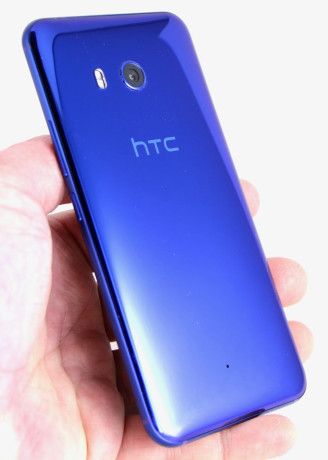
The U11 is HTC's flagship smartphone for 2017. It competes directly with the iPhone 7 Plus, G6, and Galaxy S8+. HTC has always offered a unique experience on its handsets, and the U11 dials the unique factor up to, er, 11 with features like Edge Sense and Sense Companion. If you want a flagship that checks off all the right boxes and looks absolutely gorgeous doing so, the U11 may be what you seek. Here is Phone Scoop's in-depth review.
Hardware
Is It Your Type?
The HTC U11 is the company's flagship smartphone for 2017. It competes well with the Apple iPhone 7 Plus and Samsung Galaxy S8+ in terms of size, features, and cost — and throws in some unique tools not available from the competition. If you're in the market for a leading handset from a company other than Apple and Samsung, the U11 is a solid place to start thanks to its gorgeous design and top-level specs.
Body
You likely won't find a more visually arresting phone this year than the HTC U11. HTC has taken its years-long obsession with high design and turned it into a love affair with glass and metal.
The U11 is similar to the U Ultra in that it relies on an all-glass, curved rear panel. It has a layer of stunning color underneath that simply dazzles and delights the eyes. Words fail to describe the insane beauty of this phone. Both the rear and front glass pieces are curved along all four edges and corners, providing a smooth, uninterrupted look. These front and rear glass panels sandwich a thin aluminum frame that provides the U11 with its rigidity and strength.
As amazing as the glass is, the overall shape of the U11 is disappointingly boring. The corners, curves, and basic footprint are very close in appearance to that of the iPhone 7 Plus, which is itself a somewhat outdated design. I deeply appreciate what HTC did with the U11's glass and coloring, but it deserves a better chassis. It's a bit like applying the world's best paint job to a Mazda rather than a Maserati. It's a great paint job, but the paint would look even better with some svelte curves. The HTC One 7, One 8, and 10 were all more interesting from a design/shape perspective.
In terms of size, the U11 is really close to the 7 Plus and S8+. The U11 is shorter than both the S8+ and the 7 Plus, but wider than the former and thicker than the latter. We're talking by just a few millimeters (and sometimes less) here; all three phones are similarly sized. This means the U11 will be comfortable to use for most people, though those with the smallest hands may find it too big. It's often a two-handed phone. The smooth, rounded corners and overall slim profile mean the U11 slips into pockets with ease. It's a breeze to carry around and use.
You can't ask for finer materials. HTC selected high-grade aluminum and Gorilla Glass front and back to give the U11 its luscious in-hand feel. I can assure you the chassis components are top quality and fitted together precisely. The glass panels are tucked into the aluminum panel snugly all the way around. Only LG and Samsung have crafted similarly appealing phones this year, in the G6 and S8, respectively. The U11 puts the iPhone 7 Plus to shame.
There is a downside to all this friggin' beauty: the U11 is friggin' fragile. The 7 Plus is a bit tougher thanks to its all-metal rear panel. The G6, too, is tougher due to the flat front and curved shape of the screen. You can tell me "But Gorilla Glass!" all day long, and yet that's not going to stop the U11 from shattering when dropped onto hard surfaces from significant heights. In other words, you may want to wrap it up in a case. Fortunately one is included in the retail package.
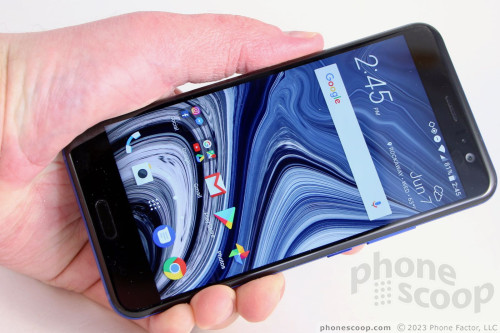
I appreciate the U11's pitch black front surface; the display and sensors are indistinguishable from the surrounding bezels. Even the home button, which doubles as a fingerprint reader, disappears into the inky blackness of the phone's face. Speaking of buttons, the home button is capacitive, not physical, and it works at the slightest touch. In fact, I found it to be almost too sensitive. Capacitive keys are on either side for interacting with the Android "back" and "app-switcher" functions. They work well. I appreciate the slimness of the side bezels, but the bezels above and below the display are much thicker than I'd prefer to see on a 2017 flagship.
The screen lock button and volume toggle are perched on the right edge of the U11. I really like the feel of the screen lock button, which has distinct ridges to give it some texture. This makes it really easy to find by feel. Travel and feedback is really good. The volume toggle is longer and smoother. The profile is good, and so are travel and feedback. The invisible pressure sensors for the U11's Edge Sense feature (more on that later) are buried in the side edges.
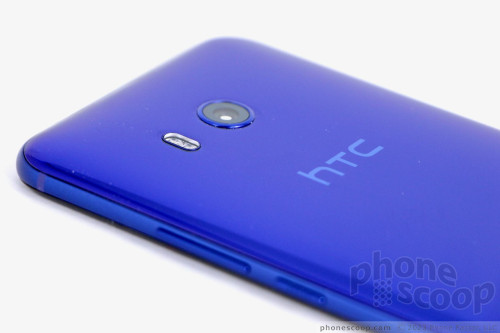
The combo SIM card / memory card tray is buried in the top edge of the phone. You'll need a paperclip or SIM card tool to remove it. It accepts nano SIM cards and microSD memory cards. The left edge of the phone is completely smooth and uninterrupted. The USB-C port, speaker, and a microphone adorn the bottom edge. Rather than use small holes for the speaker, HTC cut a single slot in the underbelly. The speaker hole is almost as big as the USB-C port. It looks odd.
You won't find a 3.5mm headphone jack anywhere on the U11, as HTC has moved to USB-C audio for its high-end devices. This is just as annoying now as it was when other phone makers removed the headphone jack. HTC includes its own USB-C headphones in the box, as well as a USB-C-to-3.5mm adapter, but these are imperfect solutions to a completely avoidable problem.
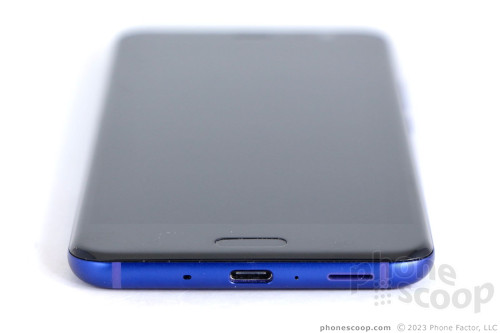
Like other handsets in this class, the U11 is water resistant, with an IP67 rating. It can handle rain, sprays, and a short immersion into a shallow amount of water. That means you'll be safe if you accidentally drop the U11 in the pool this summer, which is about all you can really ask.
If there's one thing I loathe about the U11's mirror-like rear finish, it's the material's ability to collect the worst gunk from your hands. It takes two seconds flat to totally besmirch the glass surface with fingerprints and other grime in the nastiest possible way. Ew. I was constantly taking a polishing cloth to the phone's backside. Speaking of which, you cannot remove the glass panel; the battery is inaccessible.
The U11 is a gorgeous, well-made piece of hardware that impresses. It's not perfect, but it's a fine balance of design, quality, and features.
Screen
The primary reason the U11 is physically wider than the S8+ and G6 is because HTC stuck with the more common 16:9 aspect ratio for the display. Where Samsung and LG went tall and narrow, HTC kept things wide. The 5.5-inch screen has quad HD resolution (2,560 x 1,440p). The pixel density is fantastic and everything on the screen is smooth. You can't spot individual pixels anywhere. Brightness is excellent, as well, and the LCD panel puts out an incredible amount of light. The U11 was completely readable outdoors under direct sunlight. Viewing angles are very, very good for an LCD with hardly any brightness drop or blue shift.
Together, the brightness and resolution go a long way toward making the U11 a viable VR device with something like Cardboard, but it's not compatible with Google Daydream since that requires an OLED screen.
Signal
HTC engineered the U11 with fantastic LTE support, including Band 66, one of the newest, (currently useful with T-Mobile.) HTC plans to sell the phone unlocked directly to consumers, and it should work well on AT&T, T-Mobile, Verizon Wireless and their myriad prepaid brands. Sprint will also sell the phone. The U11 is one of a handful of devices that supports Sprint's new HPUE technology for faster speeds (particularly at the cell edge in Band 41). I tested the Sprint model and came away impressed.
The phone remained latched onto LTE service throughout the time I tested it and never once dropped the signal entirely. I was able to connect calls consistently on the first dial, and the U11 easily held onto calls over miles of highway driving. The phone didn't drop any calls, nor did it miss any.
Data speeds were excellent across the board. In fact, the U11 was an LTE powerhouse. I streamed HD video and lossless audio without a single hiccup. The U11 is fast Fast FAST.
Sound
Call quality via the U11 is pretty good. Many calls sound fantastic, while just some were slightly distorted. The earpiece produces decent sound, and just enough volume. You need to crank it up all the way to hear calls in busy spaces. People always said I sounded good.
The speakerphone is dramatically better. It produced much clearer audio and could handle being pushed all the way up without turning things into a distorted mess.
The U11's speaker design is similar to that of HTC's own U Ultra. Gone are the awesome BoomSound stereo speakers that adorned some of HTC's classic handsets.
The U11 has a high-frequency speaker in the earpiece and a low-frequency speaker in the speakerphone on the bottom edge. Together, the two push out full-range sound — but it's not true stereo. The sound is very good when you hold the phone normally. You can turn it up and easily fill a room with music. If you decide to turn the phone sideways to watch some video, it's pretty obvious (to me, anyway) that the highs are coming from one side and the lows are coming from the other. Turning on the U11's "theater mode" doesn't do much to mitigate the imbalance. The bottom edge speaker fires out a huge amount of audio and the earpiece simply can't match it.
USonic
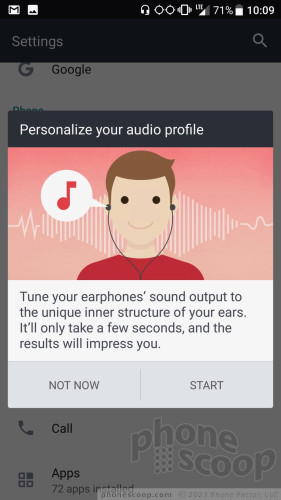
Then there's the headphone situation. Because there's no 3.5mm headset jack, HTC included its own USonic headphones in the box. What makes the USonics unique is that they measure and map your inner ear and then rely on phone-based software to analyze and adjust the sound profile specifically for the shape of your ear canal. The tool shows you some EQ curves so you can compare the original curve to your personalized one, and you can toggle it on and off to compare. I have no doubt that these headphones sound better after applying the USonic tool. The U11 goes one step further than the U Ultra: its USonic headphones also include active noise cancellation. The headphones and U11 work together to listen to the ambient sound and use algorithms to generate the opposite wave length to tamp down the external noise. The result is clean(er), clear(er) music. The software works. Together, the customized sound profile and active noise cancellation make the USonic's some of the best in-box headphones I've ever heard. This is how USonic.
HTC did include a USB-C-to-3.5mm adapter in the box, which should allow you to connect your U11 to legacy devices that offer only 3.5mm input. This adapter only works with HTC phones, and the U11 didn't work with a third-party adapter I tried. This annoys the living crap out of me. I don't care who's at fault, this stuff needs to just work.
Battery
HTC carried over the U Ultra's 3,000 mAh battery for the U11. I would have preferred to see a higher capacity battery, but 3,000 mAh is about on par with today's competing flagships (except for the S8+, which has a huge 3,500mAh battery.)
I found the U11 makes it through a full day of use with a fair amount of power to spare come bedtime. The U11 surely has more battery left at the end of the day than the HTC U Ultra, which was close to dead at bedtime. As per the norm, I used the automatic screen brightness tool and kept all of the radios (Bluetooth, WiFi, GPS, etc.) on. I used the phone for messaging, social networking, emailing, streaming music and video, picture taking, and much more.
The phone includes HTC's Power Saver mode, which conserves CPU cycles, limits location services, reduces screen brightness, and turns off vibration. The Ultra Power Saver mode is more dramatic; it basically turns the U Ultra into a glorified feature phone, which means the phone, messaging, and email apps run, but nothing else. This can add up to a day and a half of life to a nearly depleted battery.
The U Ultra cannot charge wirelessly, which kind of stinks, but the Snapdragon 835 processor supports Quick Charge 3.0 and HTC was kind enough to stick a QC3 charger in the box.
Bluetooth, GPS, NFC, WiFi
HTC did a fine job with the U11's ancillary radios. The Bluetooth radio worked really well. I paired it with a number of headphones and speakers, as well as my car. Call quality through dedicated headsets and my car's hands-free system was very, very good. Music impressed me via Bluetooth when I streamed some tunes to my favorite speaker.
The included NFC radio helped me pair the U11 with a variety of accessories. The phone also supports Android Pay for mobile payments if that's your bag.
As far as the GPS radio is concerned, the U11 ran Google Maps flawlessly. Maps always pinpointed me to within 10 feet in just a couple of seconds. It doesn't get much better than that. Real-time navigation? Pshaw. No problem. I blindly trusted the U11 to get me to a remote field for one of my daughter's lacrosse games. It worked perfectly in the northern sticks of New Jersey.
WiFi? Yeah, it rocked.
Software
Edge Sense
One of the U11's hallmark features is called Edge Sense. HTC describes Edge Sense as a way to "intuitively interact with your smartphone to make your life easier." I don't know about easier, but you can definitely interact with the U11 by giving it a hand hug.
Edge Sense
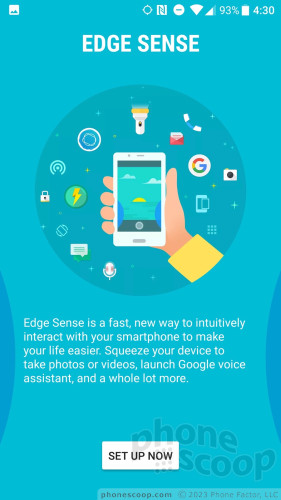
The phone has pressure sensors buried in sides of the phone (hence the name.) The sensors are placed just below the phone's waistline, or just below the side buttons. In order to use Edge Sense you'll need to learn how to properly squeeze the phone and set up defined actions for those squeezies. For example, you can dial in how hard the U11 must be squeezed in order for Edge Sense to work. This is vital. If you set the pressure too low, you can accidentally trigger Edge Sense just by holding the phone firmly.
What can Edge Sense do? The default action is to launch the camera. Since a double-press of the screen lock button also launches the camera, you might want to set Edge Sense to do something else, such as launch Google Assistant, launch pre-selected apps (like email), take a screenshot, turn the flashlight on/off, etc.
If you really want to get crazy, you can turn on and define advanced squeezing actions, such as short squeezes and squeeze-and-hold gestures. These allow you to create a total of three possible actions when squeezing the phone. Other options include visual feedback (blue bars that appear on the side of the phone when squeezed) and haptic feedback. I prefer the latter.
Does this all work? Sure, Edge Sense does exactly what HTC's marketing materials claim: you can squeeze the U11 to take select actions. It's novel, to be sure, but not the sexiest selling point ever. Edge Sense works through cases and gloves, which is a nice bonus.
Sense Companion
Another novel feature offered by the U11? Access to Google Assistant, Amazon Alexa, and HTC's Sense Companion. The first two are known entities. I love Google Assistant, find it amazing, and use it every single day. Amazon Alexa, too, is a powerful voice tool. Google Assistant can do a lot more than Alexa can, and Alexa is tied somewhat to Amazon's services. Still, if you like talking to Assistant or Alexa, the U11 allows you to do so whenever you wish.
Sense Companion
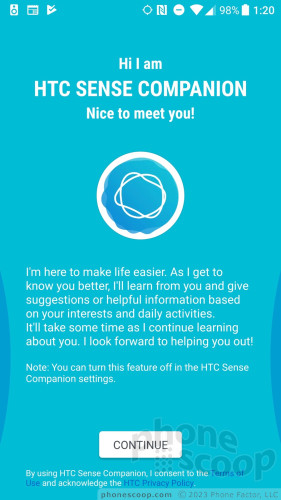
Sense Companion is HTC's spin on the device-side assistant and it's not nearly as good as the competition. You'll need to activate the service, walk through some basic settings, and give it permission to offer suggestions. Over time, Sense Companion will tell you when there's traffic, warn you about upcoming calendar events, record and display your fitness data and such. It's not voice activated like Assistant and Alexa, so you have to interact with it more directly.
After using it for a week, it hardly offered me any suggestions at all and I found it to be mostly duplicative and useless given the availability of Google Assistant and/or Amazon Alexa.
Lock Screen
The U11 runs Android 7 Nougat with HTC's Sense user interface on top.
Lock Screen
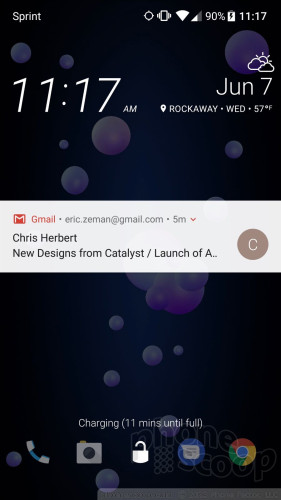
The lock screen shows the clock, notifications, and shortcuts whenever the lock or home buttons are pressed, the screen is tapped, or the sides are squeezed. I like that the clock includes the weather details for your current location.
The Quick Settings panel is accessible from the lock screen, as is the full notification shade where you can respond to notifications and more. These act as any stock Android phone might. The lock screen shortcuts, of which there are five, mirror whatever apps you've set in the home screen dock.
The U11's front-mounted fingerprint sensor is easy to train and easy to use. You may instead opt to use a PIN, pattern, or alpha-numeric password. The U11's sensor is on par with the fingerprint readers on G6 and Galaxy S8+. It's definitely quick enough to be used as your primary unlocking method.
Home Screens
HTC's Sense interface skin allows for an incredible amount of customization on the U11. While it sticks to the core Android framework, HTC has given U11 owners plenty to tweak.
Sense Home
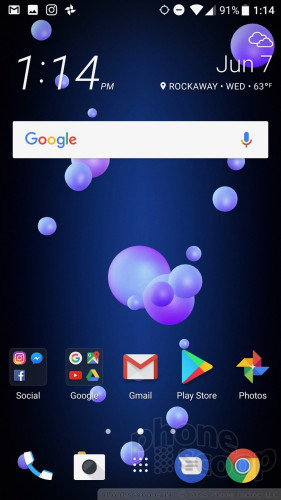
The home screen panels are fully customizable by end users and hold plenty of apps, shortcuts, and widgets.
Blinkfeed, HTC's social newsreader, is active as the left-most home screen panel of the U11. You can use it to generate a feed from Twitter, Facebook, and a handful of third-party news sources. One extremely annoying thing: Blinkfeed contains ads. If you choose to swipe over to Blinkfeed, chances are the first thing you see will be an advertisement. This is not the homescreen experience I want. You can disable some ads, but the switch is buried pretty deep in the settings. You can also disable Blinkfeed completely, which is what I typically do on HTC phones.
HTC left the Quick Settings panel alone, meaning it looks and acts like stock Android, but the company gave the settings menu its own fonts and colors. These core tools are easy to access and use.
The app drawer offers a lot more flexibility than the stock Android version, as it allows users to arrange apps alphabetically, in custom order, or via most-recently-used. It also lets people change the size of the grid. I wish the app drawer scrolled smoothly; instead, it jumps vertically between full pages. The app drawer does include a search tool and supports folders.
The U11 includes a handful of pre-installed themes. The themes can be tweaked with various accent colors, wallpapers, keyboards, icons, fonts/sizes, and on and on. HTC's Freestyle themes — fully customizable — are available, as well. You have to create an HTC account to download the coolest stuff.
The U11 is powered by the Qualcomm Snapdragon 835 with 4 GB of RAM. This is the same flagship processor found in the Galaxy S8+ and it does a fantastic job. The U11 ran smoothly with no issues whatsoever. All of the apps opened swiftly, screen transitions were liquid-like, and the phone rarely got warm. The 835 easily chewed through some basic virtual reality content via Google Cardboard.
Camera
It's kind of silly how many ways you can launch the camera. Options include a loving hug via Edge Sense, a double press of the screen lock button, the lock screen shortcut, and the home screen icon. The camera opens in a blink, but defaults to whichever shooting mode you used last. In other words, if you recently captured some sweet hyperlapse action, the U11's camera will launch in hyperlapse mode when you next give it a squeeze.
U11 Camera
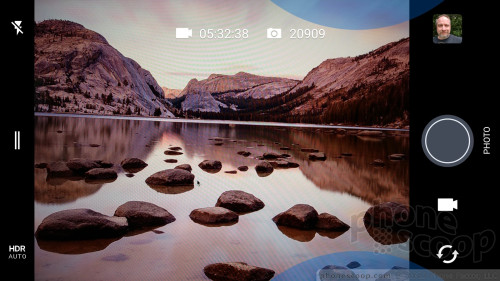
The camera app is identical to the one we saw on this year's U Ultra from HTC. A few settings are available along the left edge. The U11 has separate buttons for snapping pictures and capturing video. This means you don't have to change modes to record video, and you can easily take pictures while recording video.
When using the standard camera mode you can quickly set the flash and HDR to on, off, or auto. If you want to do more, swipe open the little drawer on the left side of the screen. This reveals all the Photo modes (normal, Zoe, panorama, pro), Video modes (normal, time lapse, slow-motion), and Selfie modes (picture, panorama, video). Grouping the shooting modes this way really simplifies the interface, but it takes a lot of scrolling to find the mode you want. I wish they were available on a single screen.
The auto shooting mode lets you control the flash and HDR and that's about it. The Pro shooting mode gives you control over white balance, exposure, ISO, shutter speed (up to 16 seconds), and focal points. The sliding tools for adjusting these are straightforward. I love that you can save three custom Pro shooting modes as presets. This is totally cool. Pro mode also allows you to capture RAW images, which offer more potential for fixing exposure and white balance after the fact.
The Zoe mode takes a combination of pictures and video lasting about three seconds. This feature has been around for a while.
The dedicated selfie mode includes HTC's beautification filter, several countdown timers, and a screen-based flash that first checks white balance and then fires the shot. These all help get that perfect selfie.
Once you learn to navigate the app, the camera is quick and light on its feet. The U11's Snapdragon 835 does its job and pushes the camera along swiftly. It feels fast all the time. Even HDR shooting is rapid.
Photos/Video
The HTC U11 has a 12-megapixel sensor with 1.4-micron pixels, optical image stabilization, PDAF (phase-detection autofocus), and an aperture of f/1.7.
This phone takes fantastic pictures.
The U11 delivered crisp, colorful images with a high degree of accuracy. Focus is incredibly sharp throughout. The U11 captured perfectly accurate colors. Images below such as the pizza boxes and balloon are spot-on. Exposure is handled well when shooting in normal mode, as well as with HDR set to auto. The amount of detail the stone wall / trees photo below is excellent considering how bright the wall was and how dark the trees were when I shot the photo. The U11 has a really, really, really good camera.
The selfie camera is solid, but not as impressive as the main imager. It has a 16-megapixel sensor and flash. Exposure is decent, as is color accuracy, but you can see in the sample below that focus is a bit soft. I love the panorama selfie mode, which lets you take super wide-angle selfies.
The video camera delivers near flawless video. It's able to capture 4K video, but you'll probably be best served by sticking to normal 1080p HD. The video I shot was sharp, colorful, and just about perfectly exposed.
You can absolutely use the HTC U11 as your main picture and video device on most occasions. It is on equal footing with phones such as the Galaxy S8+ and G6.
Wrap-Up
HTC gets so much right with the U11, and yet still manages to trip itself up in a few places. There's no question the design is eye-popping. That mirror-finished rear glass panel is purity defined. I wish the phone's shape and front face were even half as appealing as the back. The materials are top-notch and the waterproof chassis is a welcome addition, though a case might sadly be in order.
The phone nails most of the other flagship basics. It has a bright, high-resolution display, excellent data performance, and solid battery life. The U11's super quick LTE speeds on Sprint's HPUE service were particularly impressive. Toss in coveted tools like rapid charging, memory card support, and a crazy loud speaker, and the U11 hardware impresses.
HTC's take on Android can be a bit much, leaving consumers with screens and screens of customization tweaks to wade through. The U11 sees HTC add a novel feature called Edge Sense, which lets you call up certain actions by squeezing the phone. I dig it. I wasn't as impressed with HTC's Sense Companion, which is a poor man's version of Google Assistant. Still, HTC's software lets you do far more to personalize the device that most other UI skins.
The camera application is powerful and puts the high-quality sensor to excellent use. The U11 takes amazing pictures, putting the phone toe-to-toe with the best available in the market today.
The U11 is a return to form for HTC, a showcase device that displays not only the company's design chops but its intuitive thinking and high level of execution. Sure there are some annoying things about it, but taken as a whole the U11 is uniquely lovable. It's priced at $649, which is right in line with the competition.

Comments
Screen
The S8 is Samsung's Super AMOLED, which means colors are oversaturated, but you get amazing blacks and excellent outdoor visibility. I prefer screens that are mor...
(continues)
(continues)


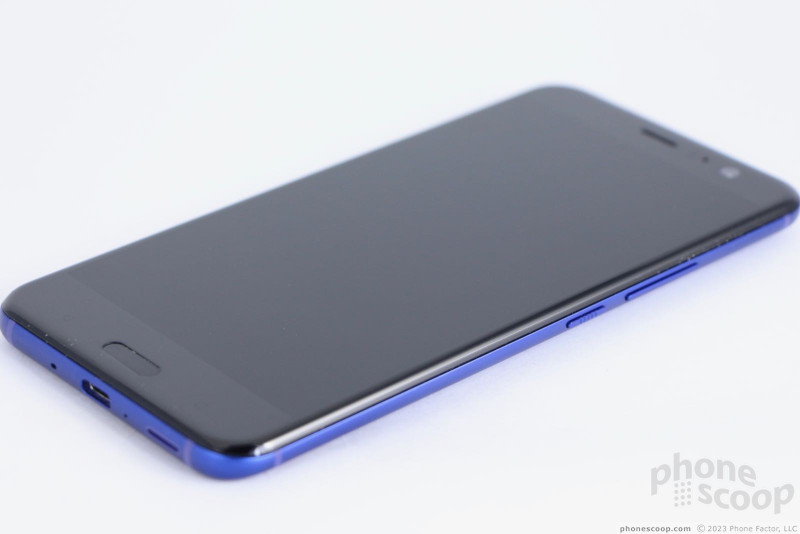















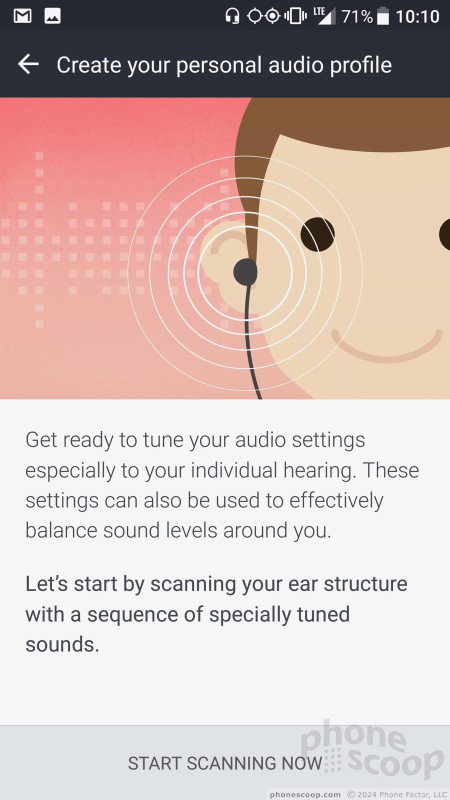





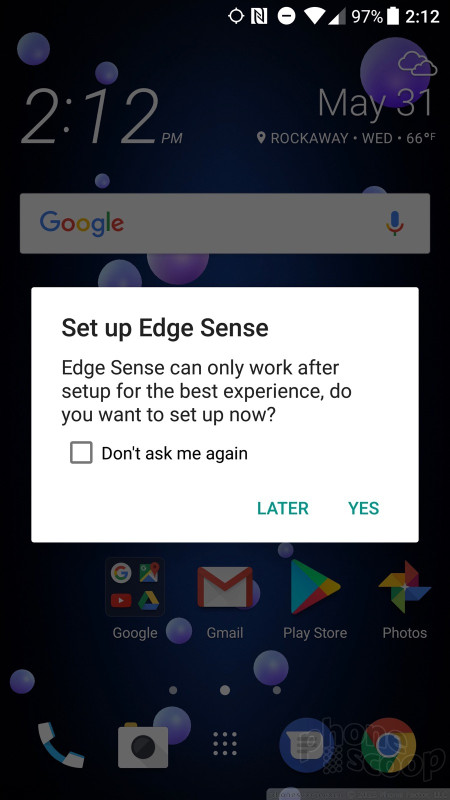








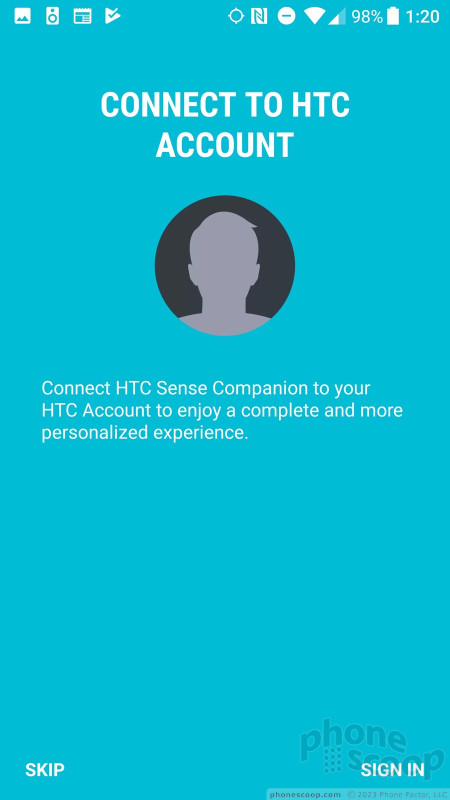













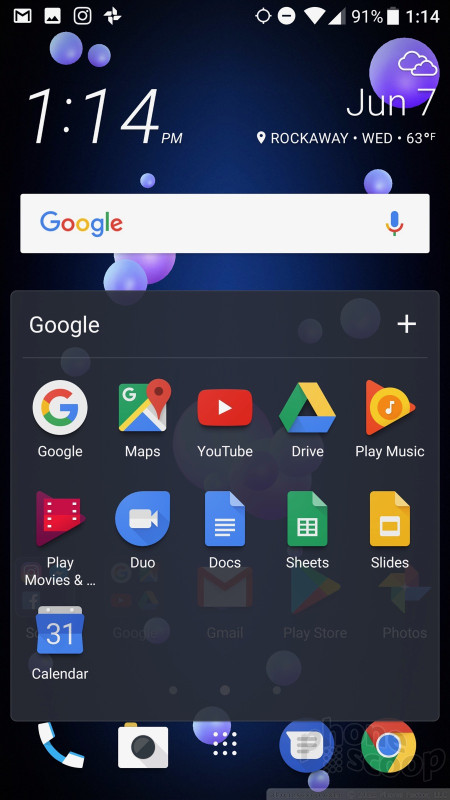








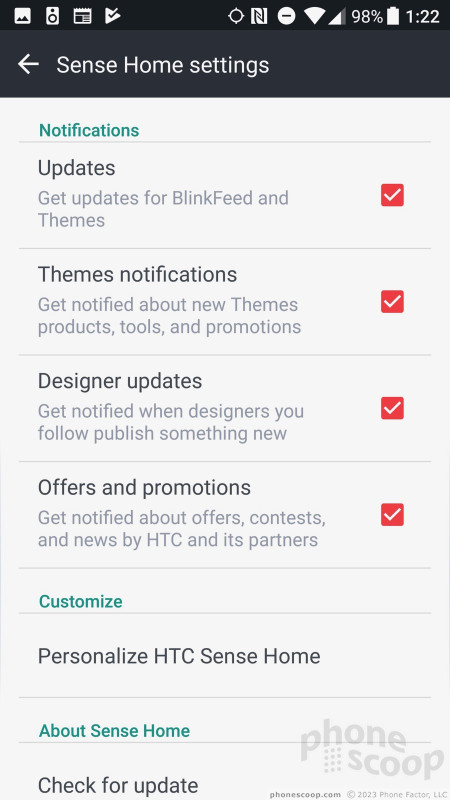







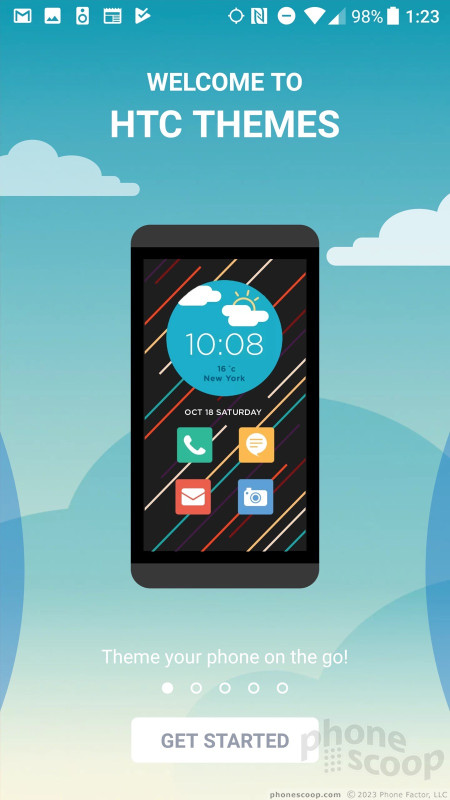





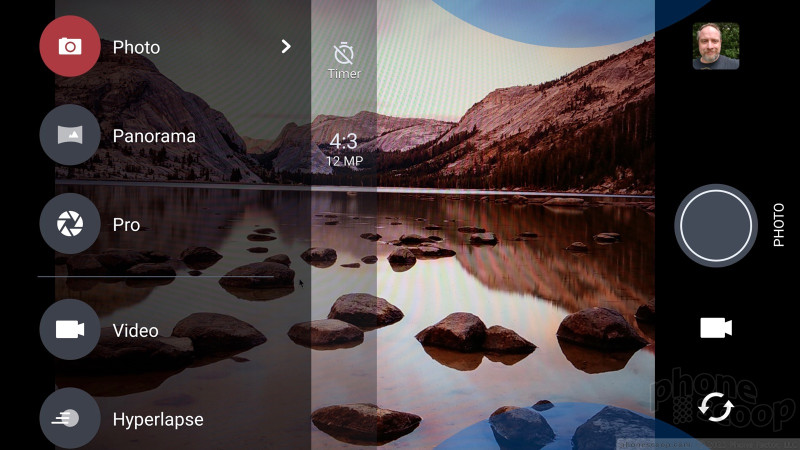

























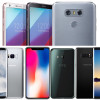 Top Five Flagship Handsets of 2017
Top Five Flagship Handsets of 2017
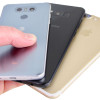 5 Best Phones to Take On Summer Vacation
5 Best Phones to Take On Summer Vacation
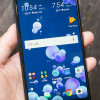 Hands On with the HTC U11
Hands On with the HTC U11
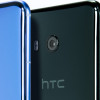 HTC Offering 3 Months of Amazon Music Unlimited to U11 Buyers
HTC Offering 3 Months of Amazon Music Unlimited to U11 Buyers
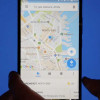 HTC Testing More Squeezable Edge Sense Actions for U11
HTC Testing More Squeezable Edge Sense Actions for U11
 HTC U11
HTC U11









